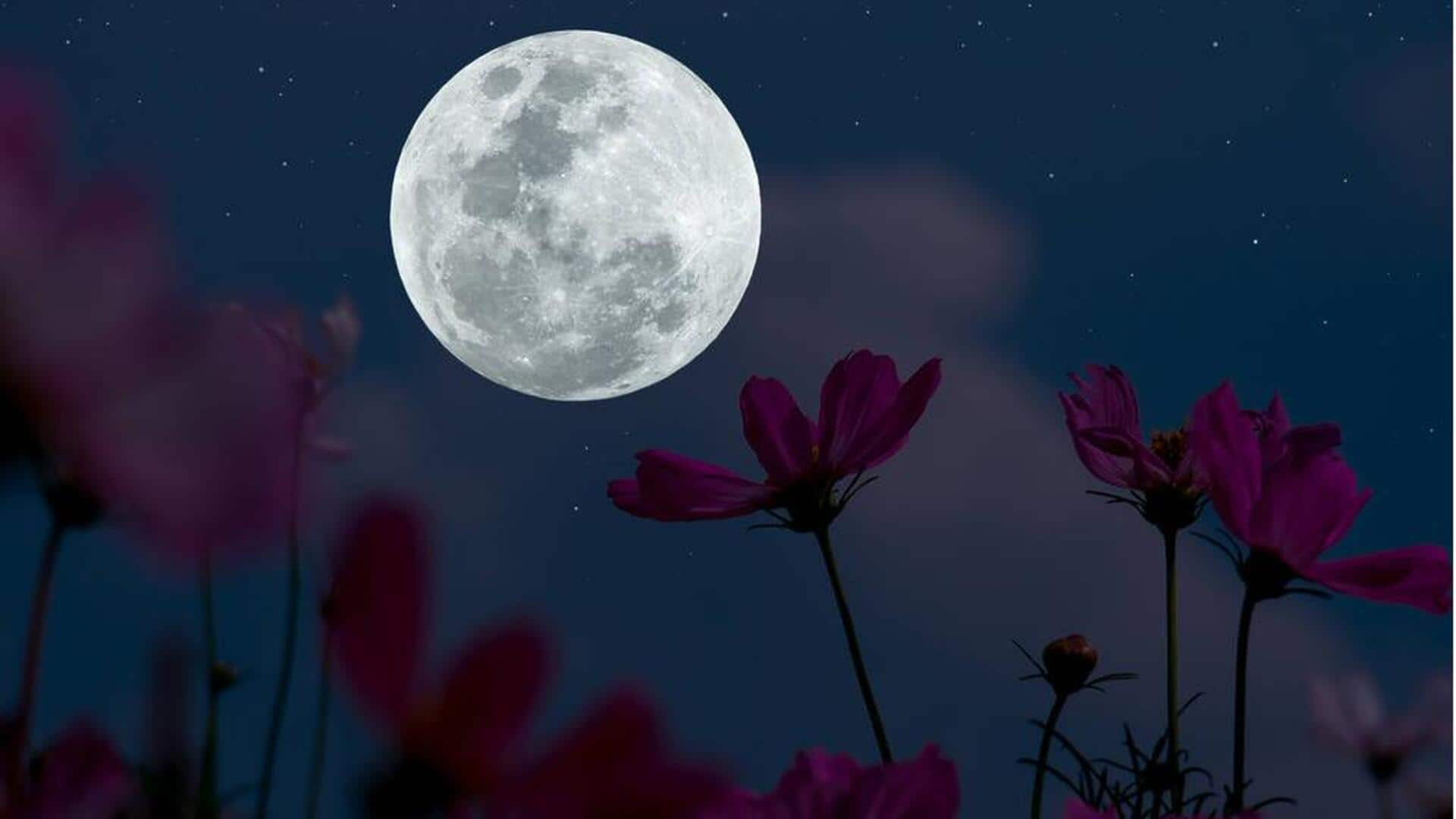
Flower Moon to illuminate night sky today: Know its significance
What's the story
The 'Flower Moon' or the full moon of May will light up the skies today. The phenomenon occurs when the Moon sits directly opposite to Earth from the Sun. At this point, sunlight completely illuminates the side of the Moon facing our planet. This month's full moon will peak at around 10:30pm IST, drawing stargazers and astrophotography enthusiasts alike.
Significance
What's behind the name 'Flower Moon'?
The May full moon is called 'Flower Moon' because it coincides with the peak blooming season of wildflowers in the Northern Hemisphere. Indigenous communities in North America, particularly the Algonquin people, named it after observing this natural event year after year. According to Time and Date, flowers such as anemone, wild garlic, indigo, bluebells, lupine, sundrops, and violets are among those that typically bloom during this month, giving the full moon its vibrant name.
Moonrise
Optical effects and lunar features
Just after moonrise, you may see the Moon appearing slightly orange or yellow. This optical effect happens because light reflected off the lunar surface has to travel further through Earth's atmosphere before reaching the viewer than when it is higher up in the sky. However, during the full moon phase, craters, ravines, and mountain ranges tend to blend into the lunar surface, making them hard to spot.
Lunar exploration
Dark basaltic maria on lunar surface
Despite the bright light of the full Flower Moon making it difficult to see certain lunar features, the dark basaltic maria covering large swathes of the Earth-facing lunar surface will be clearly visible. These maria are remnants from a period of incredible violence and change on the moon, where colossal impact basins were flooded with liquid lava that cooled to form a darker surface.
Morning view
Saturn, Venus and Neptune will be visible in eastern sky
Early risers will get a chance to see the Moon descending near the southwestern horizon in the predawn hours of May 13. Meanwhile, the planetary trio of Saturn, Venus and Neptune will be rising in the eastern sky. This unique alignment offers a perfect opportunity for skywatchers to observe multiple celestial bodies at the same time.